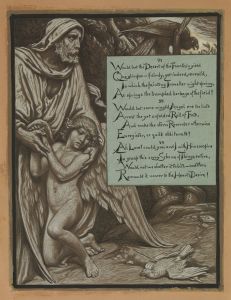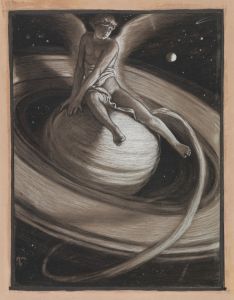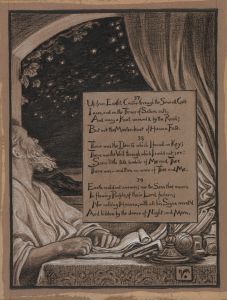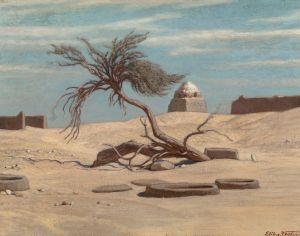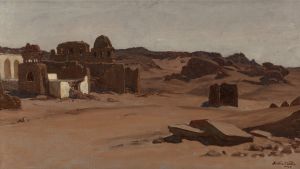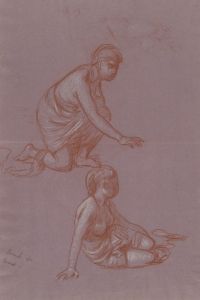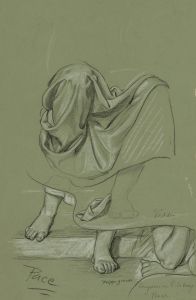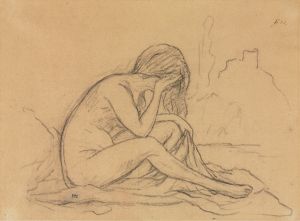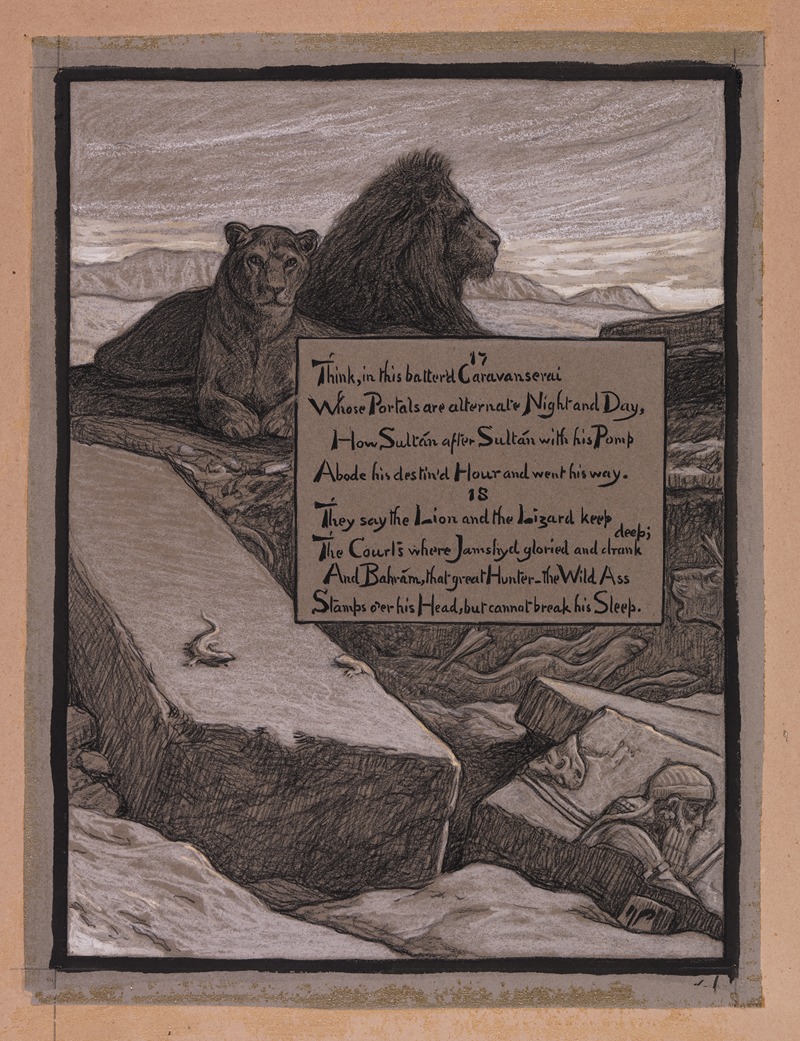
Courts of Jamshyd
A hand-painted replica of Elihu Vedder’s masterpiece Courts of Jamshyd, meticulously crafted by professional artists to capture the true essence of the original. Each piece is created with museum-quality canvas and rare mineral pigments, carefully painted by experienced artists with delicate brushstrokes and rich, layered colors to perfectly recreate the texture of the original artwork. Unlike machine-printed reproductions, this hand-painted version brings the painting to life, infused with the artist’s emotions and skill in every stroke. Whether for personal collection or home decoration, it instantly elevates the artistic atmosphere of any space.
Elihu Vedder (1836-1923) was an American symbolist painter, book illustrator, and poet. He is best known for his illustrations of "The Rubaiyat of Omar Khayyam," a collection of quatrains attributed to the Persian poet Omar Khayyam. One of Vedder's notable works is "Courts of Jamshyd," which is part of his series of illustrations for the Rubaiyat.
"Courts of Jamshyd" is an evocative and intricate painting that reflects Vedder's fascination with Persian culture and mythology. The title refers to Jamshyd (or Jamshid), a mythological figure in Persian literature who is often depicted as a great and wise king. In the context of the Rubaiyat, Jamshyd's courts symbolize the fleeting nature of earthly power and glory, a theme that resonates throughout the quatrains.
Vedder's "Courts of Jamshyd" captures this theme through its detailed and symbolic imagery. The painting features a grand, yet decaying palace, suggesting the impermanence of human achievements. The architecture is ornate, with intricate patterns and designs that reflect Vedder's interest in Persian art and his meticulous attention to detail. The use of light and shadow in the painting creates a sense of depth and highlights the contrast between the grandeur of the past and the inevitable decline over time.
Elihu Vedder's work on the Rubaiyat, including "Courts of Jamshyd," was highly influential and well-received during his lifetime. His illustrations were published in a deluxe edition of the Rubaiyat in 1884, which became immensely popular and is still considered one of the finest illustrated books of the 19th century. Vedder's ability to capture the mystical and philosophical essence of the Rubaiyat through his art has cemented his place in the history of American illustration.
Vedder's interest in the Rubaiyat and Persian culture was part of a broader 19th-century fascination with the Orient, which influenced many Western artists and writers. His work reflects the era's romanticized view of the East, blending historical and mythological elements to create a sense of exoticism and mystery.
In summary, "Courts of Jamshyd" by Elihu Vedder is a significant work that exemplifies the artist's skill in combining detailed, symbolic imagery with themes of impermanence and the passage of time. It remains an important piece within Vedder's body of work and a notable example of 19th-century American illustration.





